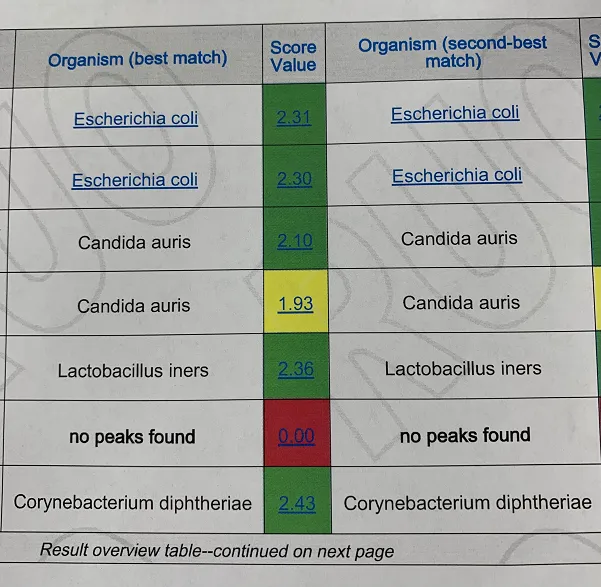One night, I was setting up some tests manually due to instrument issues. Productivity slows down whenever we experience machine problems. Trust me, doing everything manually is a pain in the neck. Suddenly, one of my colleagues approached me and showed me his results from the MALDI-TOF.

He hit the jackpot! It's not often you get an organism worth reporting to the state health department, let alone two! My coworker's concern was whether or not those were real. Oh, they were real. One patient had Candida auris, and the other had Corynebacterium diphtheriae. He wasn't sure what to do, so I walked him through the process.
Fortunately for them, the sites of collection suggest their lives were not in immediate danger. Neither case was from deep wounds or immunocompromised patients. The organisms were from superficial sites. Nevertheless, the clinical sites and physicians would also appreciate a heads-up.
In general, C auris is more or less an opportunistic fungus. Its drug resistance may seem scary, but a healthy person would not have issues with it. The most dangerous aspect of C. diphtheriae is its toxin. Before it could become a respiratory infection, it is often on the surface of other parts of the body. Most people in the US should have already received the vaccines against it.
Anyway, I walked my colleague through all the entities he had to contact. Then, we prepared the cultures for send-outs to the state labs. A bit of hassle later, we've done our part in patient care. With proper techniques and precautions, these encounters are not apocalyptic events.
Posted using STEMGeeks